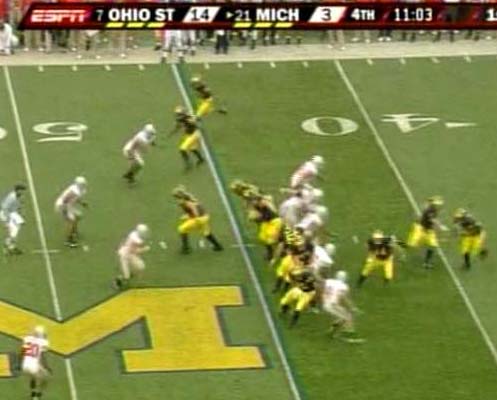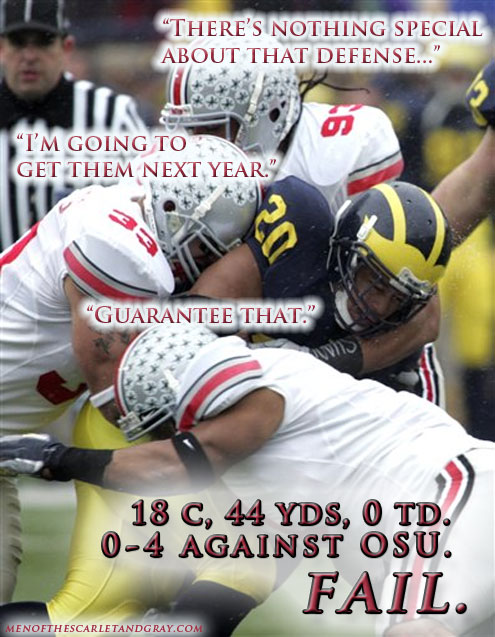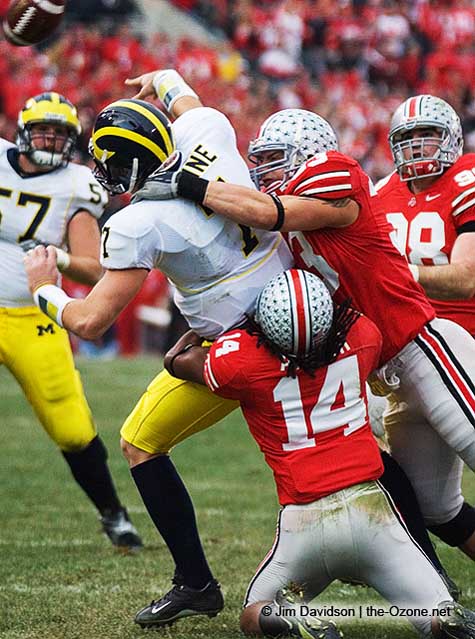 With the anti-Big 10 nonsense that is currently dominating the media, many overlook one shining example of Big 10 superiority: coaching.
With the anti-Big 10 nonsense that is currently dominating the media, many overlook one shining example of Big 10 superiority: coaching.
Of course, great coaching is not limited to a particular conference. There are examples of excellence from the Pacific to the Atlantic. Starting on the left coast, consider Carroll & Tedford. One is considered a genius by general consensus, the other a rising superstar who does scary things with average players and sub-par facilities.
Crossing the Rockies into the Big 12, one first has to scale the wall erected by Bob Stoops to keep the best players from the Plains states in-house, where 10-win seasons and national title contention is the minimum acceptable level of performance.
Continuing east across the Mississippi, men like Les Miles and Urban Meyer stand out as consistently above their peers, even during those off-years when the talent they’re coaching is not. Steve Spurrier and his dominant teams of the 90s should also be mentioned, here.
But cross north of the Ohio River Valley and you enter a land dominated by coaching excellence, tradition, skill, and competitiveness that is unequaled anywhere else in college football. Other conferences have their leaders, but none is as deep as the Big 10. Consider just a few examples:
Jim Tressel
The Sweatervest is the only active coach in Division I-A with five or more national titles in any division. Since taking over OSU’s job in 2001, he has an 83% winning percentage, which includes the aberrant 7-5 record earned his inaugural season after taking over the team from the fired John Cooper. In the seven years since joining the Big 10, his teams have earned the conference title four times and gone 4-2 in bowl games, including two BCS title games (one win, one loss in each). In 2007, despite losing a Heisman-winning quarterback and seven “skill position” starters to the NFL, he coached his team to another Big 10 championship and third BCS title game appearance. With a victory against LSU, he’ll be the only coach in history to have two BCS titles.
Ron Zook
Zook’s coaching success started at OSU in the 80s, followed shortly thereafter with a stint with that dominant 90’s Spurrier staff. In 2005, he inherited a rock-bottom Illini program and improved it from 2-10 to 9-3 by his third year. Zook recruited and trained most of the starters on Florida’s 2006 national championship squad. In 2007, his team finished tied for second-place in the Big 10, which included a road victory over #1 Ohio State, and his 2008 team will be favored by many to win the conference.
Lloyd Carr
What can one say about Carr that hasn’t been blogged about incessantly over the past few weeks? I’ll plagiarize Brian, here:
- Michigan in the Carr era: 121-40, one national championship, two BCS bowl wins, five conference titles, five bowl wins, no losing seasons.
‘Nuff said. Sure, we’ve had our fun with Carr, but we wouldn’t dare argue that he wasn’t a pillar to the college football coaching community.
Joe Paterno
Is there really a need to list JoePa’s career accomplishments here? He’s the winningest coach in history for a reason.
Joe Tiller
I list Tiller here because he is more responsible than any other coach for bringing in the modern era to the Big 10. Tiller’s “Basketball on Grass” made the rest of the Big 10 sit up and take notice of how best to combine speed and spread formations. If Tiller had ever acquired a competitive defensive coordinator, the past decade of Big 10 champions might have looked a lot different.
Bret Bielema
Since being selected by Barry Alverez as his successor two years ago, he’s gone 21-4, including a 12-1 inaugural season (which has only been done three times in NCAA history). That’s something that Tressel didn’t even accomplish at OSU, and Bielema’s done it with Alverez’s recruits. No doubt UW will become even stronger as Bielema’s initial recruiting classes get more playing time over the upcoming seasons.
Mark Dantonio
As of 2007, Dantonio is still getting settled in as new coach of MSU, but his history of success at multiple levels and for multiple teams is proof of his coaching prowess. Dantonio served as an assistant coach on all of Tressel’s dominant staffs, from YSU to OSU, including coaching the national-champion 2002 Ohio State defense. As head coach of Cincinnati, in his first year alone he led his team to its first winning season in 23 years, and directed the team into the Big East (where they beat an undefeated #7 Rutgers squad). Dantonio has the same challenge as his predecessors in East Lansing… how to woo talented players away from Ann Arbor. If he can be successful in that effort, there’s no question that MSU would transform back into an elite program.
Past Tradition
Finally, what would an article about Big 10 coaching be without mentioning men from the past such as (and in no particular order): Fielding Yost, Woody Hayes, Bo Schembechler, Barry Alverez, Fritz Crisler, Lovie Smith, Biggie Munn, Hayden Fry, Cam Cameron, Lou Holtz, Wes Fesler, Earl Bruce, etc., etc. There is no other conference with as deep a coaching tradition as the Big 10. All elements, motifs, and styles of modern football began as experiments and adjustments by the head coaches there. College football’s past is rooted in the Big 10, and the conference’s current group of coaches are continuing that tradition by being the most influential leaders and shapers of the sport.
So, over the next few weeks, as you hear over and over again how “OSU doesn’t have a chance to win the title,” or “Illinois doesn’t deserve to be in the Rose,” or “UM is going to lose by 900 to the Gators,” consider at least one area where the Big 10 has an advantage over everyone else, and don’t immediately discount any team that has such excellent leadership.
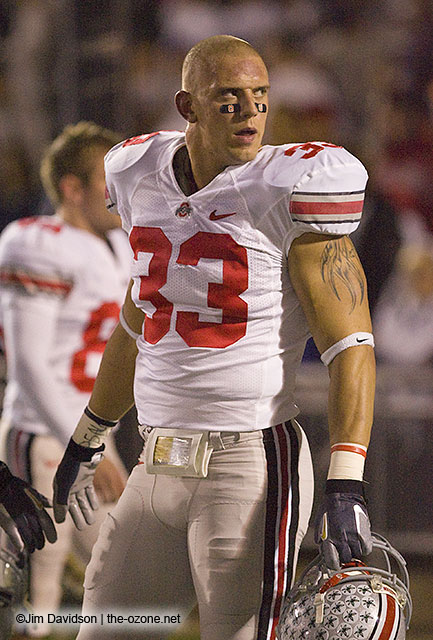

 Carr: His right bicep is ranked 17th in the AP College Football Poll!
Carr: His right bicep is ranked 17th in the AP College Football Poll!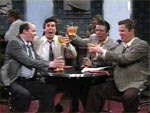 Paterno: He’s 713 years old!
Paterno: He’s 713 years old! Big Booming Voice: [ comes from extremely tall figure in upper camera angle ] I’M Vernon Gholston!! WHO WANTS A DRINK?!
Big Booming Voice: [ comes from extremely tall figure in upper camera angle ] I’M Vernon Gholston!! WHO WANTS A DRINK?!